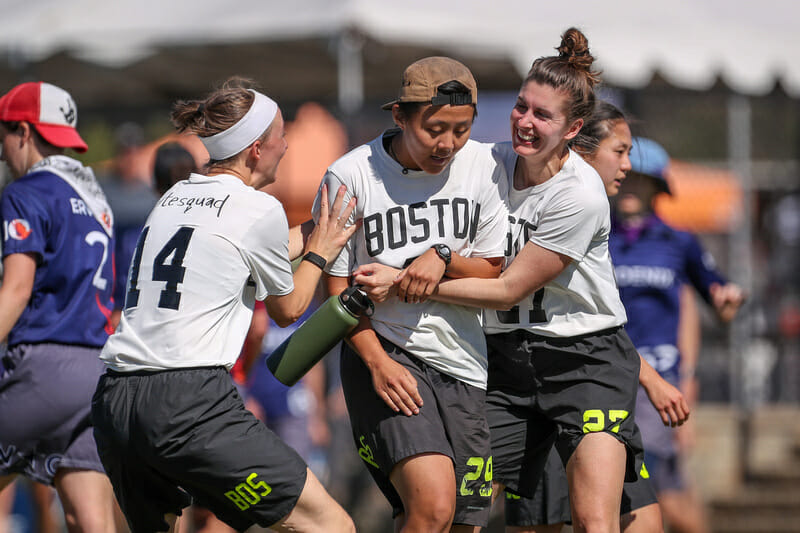Building a plan around FIT to make you a stronger athlete.
June 14, 2022 by Jace Decker in Opinion with 0 comments

Tuesday Tips are presented by Spin Ultimate; all opinions are those of the author. Please support the brands that make Ultiworld possible and shop at Spin Ultimate!
In the last article we talked about what motivation(s) you have to play ultimate, as well as what motivates you to getting better as an athlete in this sport. We discussed the idea of journaling and writing down what your purpose is for playing frisbee; maybe pushing your boundaries, having fun with friends, or feeling alive/joyful, etc. I noted that getting some other senses involved could be beneficial, i.e. not only focusing on the visual, but also including tactile, gustatory, olfactory, and emotional aspects into your imagery. Today we are going to leverage the same ideas but have the imagery be directed towards a goal around improving as an athlete in the sport.
Enhancing Our Imagery
How could imagery make you a better frisbee player? Imagery is emotionally charged and therefore motivating. The more nuanced and refined an image – the more elaborate this image is – the greater its impact on our brain and on our motivation. The elaborated intrusion model highlights the connection between the mental effort we spend on a thought or experience and how distressing or motivating that additional effort or time spent makes something.
Adding senses to our imagery is like adding extra ingredients to a cake besides just flour, eggs, sugar, and water. With more ingredients like cocoa, peppermint, salt, or frosting we get a more delicious and satisfying cake. The same is true for incorporating multisensory imagery towards goals such as working out, practicing a throw, or learning more game tactics.1
All of the above is applied to sport specifically via Functional Imagery Training (FIT). FIT takes the above concepts and applies them as interventions that are both practical and easily learned. Specifically, it is used for enhancing motivation in sport, such as increasing adherence to an exercise, diet, or skill regimen. It can also be used in situ for rapid motivation boosts as well as more routinely.
If one of your goals for this season is to be able to run a whole game without feeling gassed, you can use imagery to help you. Take a second to envision what it would be like to run a game all out, without being gassed. Picture it. What would your body feel like? How is your breathing? What is the weather like? What can you see, smell, taste, and touch? What does it feel like, emotionally, to have met your goal?
Now that you have your imagery for your specific goal, be it getting to the national championships or learning how to bid, we can talk about how to apply this imagery for motivation change. Below are two specific practices you can engage in with your imagery. You can do this daily while you are doing your morning routine or in the moment during a game to work towards your goal.
L.A.P.
- Locate your cue
- Activate your imagery
- Plan for change
Set your own cue. This can be anything, just remember it is for you to remember to encourage and/or motivate yourself. This can be a proactive daily practice which can facilitate short, medium, and long term goals pretty well, such as getting more in shape for the season as a long term goal with a short term goal of going for a run today and a medium term goal of going to the optional conditioning practices each week etc.
S.L.A.P.
- Stop and breath
- Locate your cue
- Activate your imagery
- Plan for change
This is more in situ or reactive. Perhaps you are feeling discouraged about a point or a throw. Re-center, take a breath (the cue in this case was probably feeling frustrated) and think about your imagery, and then plan for change.
For example: “I am going to shift my mark so they can’t go deep on me so easily,” or “I want to look downfield first next time.”
What It Looks Like
- Cue: can be anything, can be in situ as well
- Putting my feet on the floor after I get up in the morning.
- Imagery practice: your imagery of the completion/attainment of your goal/motivation
- “I am standing on the field with my team. I am drenched in sweat, but not gassed. I feel exhilarated. I am proud of how well I played on defense and that I didn’t give up on chasing my person deep. I can feel the wind, I can hear my teammates talking to each other and congratulating one another on a really good game. I can taste the cinnamon gum I usually chew while playing, I can see the pink cones and the field in my mind, the grass was just cut and smells green and earthy”.
- Plan: “What can I do today to get to that game? What can I do this week?”
- Eat better, work out each Thursday, go for a walk on lunch today etc.
May, J., Andrade, J., Kavanagh, D.J. et al. Elaborated Intrusion Theory: A Cognitive-Emotional Theory of Food Craving. Curr Obes Rep 1, 114–121 (2012). https://doi.org/10.1007/s13679-012-0010-2
https://www.iosrjournals.org/iosr-jnhs/papers/vol4-issue5/Version-3/J04535658.pdf ↩